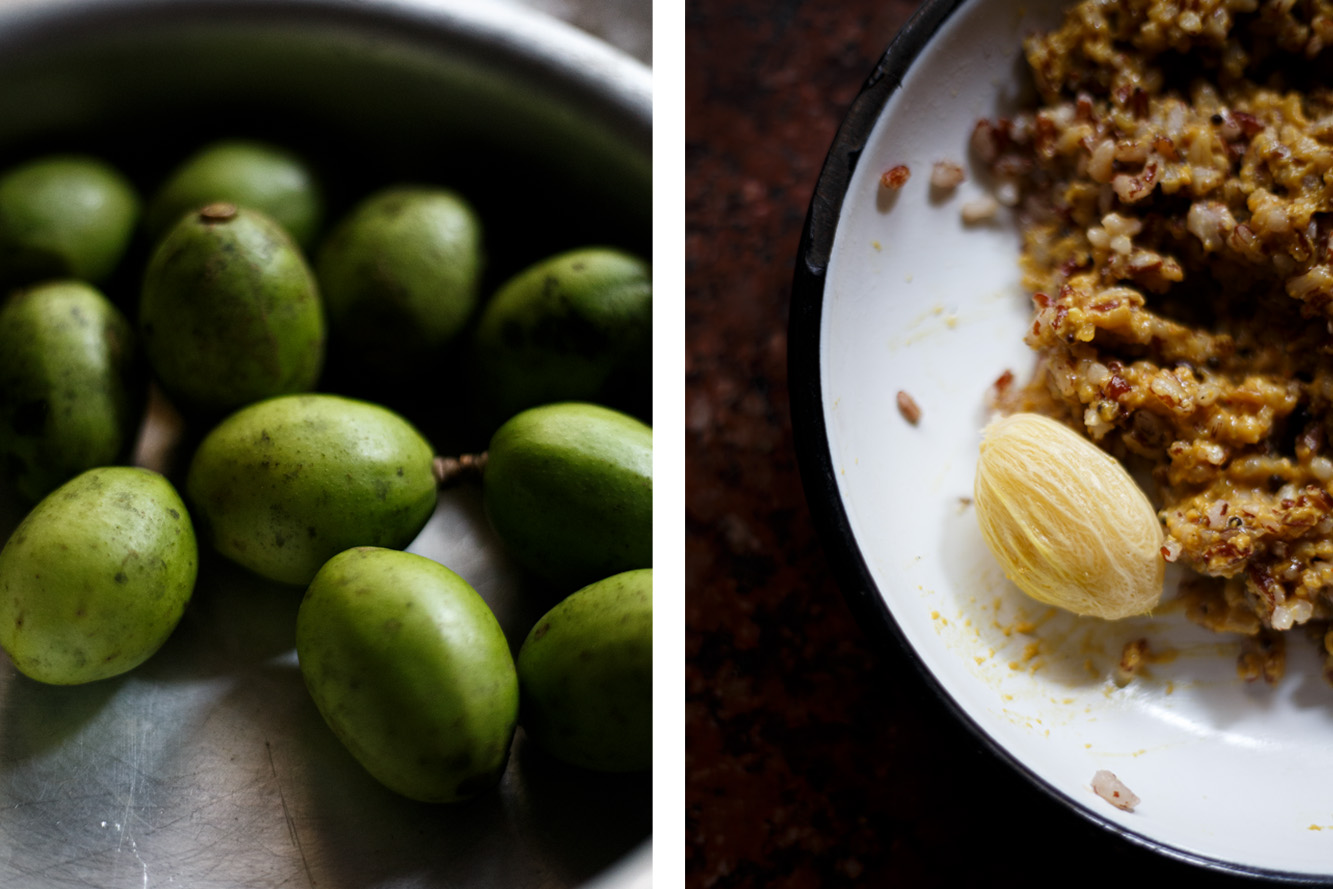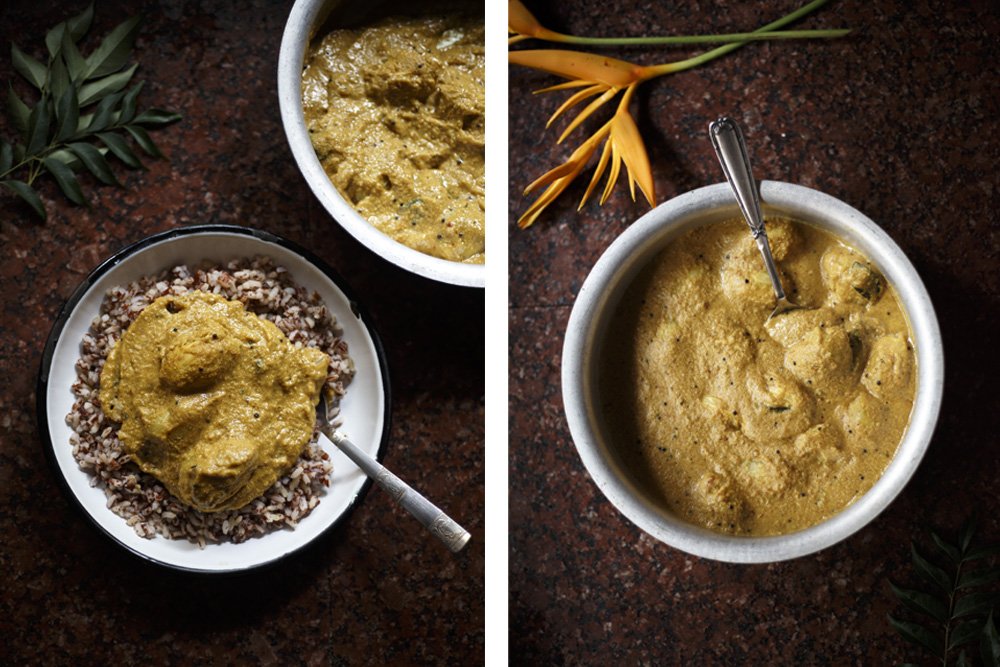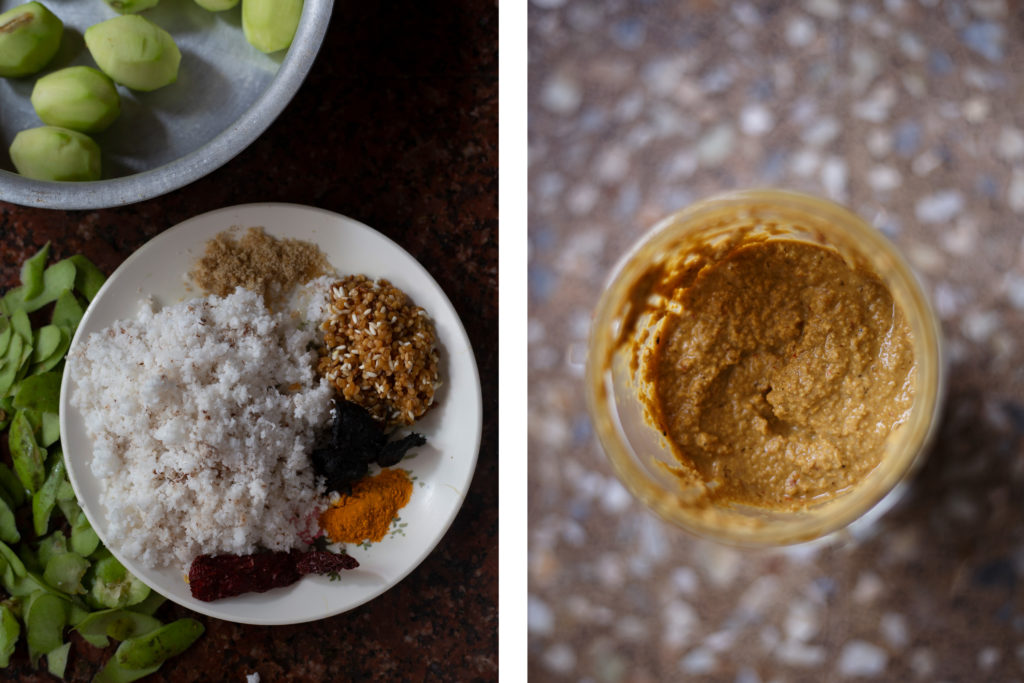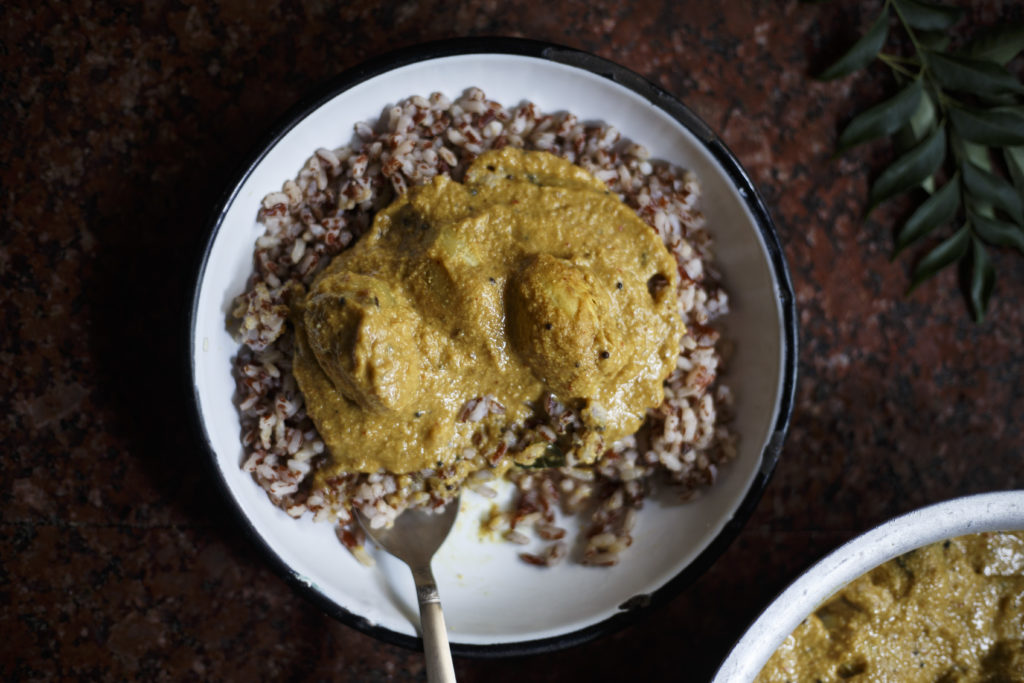
So much of food from India is a complete sensory experience. Right from using your fingers and eyes to calculate the quantity of spice that will go into making a masala to the satisfaction of scraping your teeth along the skin of moringa to extract the little flesh that lives inside this seed pod – it all requires you to be present and observe.
The biggest myth I have heard perpetuated by people who only look at ingredient lists in recipe, is that making the food that has been my sustenance is, complicated. The history with this thought process is complicated – The obsession with perfection (“this recipe has to work on my first try”), claiming to simplify already simple recipes and calling it simple (I have been guilty of this) or completely ignoring entire methods of cooking because it doesn’t seem authentic. It is anything but.

It has always been so ingrained that anything associated with the kitchen is the work of a woman and even though I remember this being an equal endeavour in my house, cooking for myself was something I always felt was “laborious”. It still is for many homes that still rely on the woman for most household functions – whether paid or unpaid. My dad used to always say at social gatherings that his daughters did nothing in reply to other adults saying “oh you have daughters? you must have so much help at home”. *eye roll*.
Actually making dishes like this mild-spiced ambadyechi uddamethi couldn’t be simpler once you get past breaking and grating a coconut. Modern convenience has also arrived in Goa where you pay a little extra today and you can buy the coconut already grated. Uddamethi is a masala that contains mainly coconut, urad dal and methi (fenugreek seeds) along with a little haldi (turmeric), 1 dried Kashmiri chilli, jaggery (raw cane or coconut sugar) and a little tamarind.

Ambado or hog plum is used widely in Goan Saraswat cuisine. I have always love love loved ambade (so many exclamation points!!) but only ever got to eat in in miniscule quantities during the festival of Ganesh Chaturthi or Diwali. It is customary for people in Goa to distribute small offerings of the food or sweets they prepare amongst neighbours of other faiths as a mark of inclusion in their celebrations. My family being Catholic, received this from our Hindu neighbours.
Ambado is sour, and once peeled and boiled, you grate your teeth along the seed, as if you were eating the seed of a mango. To love Goan food is to love the marriage of salty, sour and sweet with most of the sour brought to the plate by its many locally available fruit. Tamarind, kokum, raw mango and ambado are few that take a humble meal from good to “why can’t I stop eating it”. The sour is probably why.
I was 3 days ago years old when I realised the more you chew on the ambado, the more flesh there is embedded in the net-like body of the fruit. It is a sensory experience like no other, for me. Like joy, is how I would describe it.
Ambadyachi uddamethi

I tried to estimate the quantities of every ingredient I used but I haven’t re-tested anything. I used this video by Ranchikood, which is an excellent visual document on how to make this dish at home. Even if you follow it without my recipe below, you won’t get it wrong. Ganesh Chaturthi is on August 22, so you have time to practice.
Ingredients
Inspired by Ranchikood – The Kitchen
For the uddamethi
- 2 tbsp coconut oil
- 2 tbsp urad dal
- 1 tsp methi seeds (fenugreek seeds)
- 1/2 tsp raw rice
- 1 cup grated coconut
- 1/2 tsp haldi (turmeric)
- 1 dried red chilli (I used a Kashmiri chilli)
- 1 tsp jaggery (raw cane or coconut sugar)
- 1/2 pinky finger piece of tamarind (without the seed)
Method
Heat the coconut oil on medium heat and add the urad dal to it. Stri it around, and then add the methi and raw rice. Cook until the urad dal turns slightly brown but make sure you don’t burn the methi seeds. Scoop the mixture into a small bowl along with the oil and let it cool.
In a high-speed grinder, blend the rest of the ingredients into a smooth paste. You can use a little water to get the mixture going. Set aside.
For the ambade
- 11 ambade, washed and peeled
- 1 tbsp coconut oil
- 1/2 tsp mustard seeds
- 1/2 tsp hing (asafoetida)
- 1/2 tsp urad dal
- 1 sprig curry leaves
- Salt
Method
Heat coconut oil in a small, shallow pan or kadai and add the mustard seeds, hing and urad dal to it, all on medium heat. Stir them around for about 30 seconds and then add the curry leaves. Keep stirring so nothing gets burnt.
Once the mustard seeds start to jump around, add the ambade and cover them with water until it submerges the fruit only halfway. Cover the pan and let the water come to a boil. Let the ambade cook through for 5-7 minutes. They should turn soft.
When the ambade is cooked, add the masala to the water. Whatever masala is left behind in the grinder should be rinsed with a little more water and added to the cooking vessel.
Stir it around and let everything cook for 5 more minutes. Add more water if you want your dish to be a little thinner and end with salt, to taste.
Serve with warm boiled rice.
Edlyn you really bring these stories and memories and tastes from home to life. Thank you. This was what excited me most about Ganesh Chaturthi.
Such a great friend you are, CPDC.